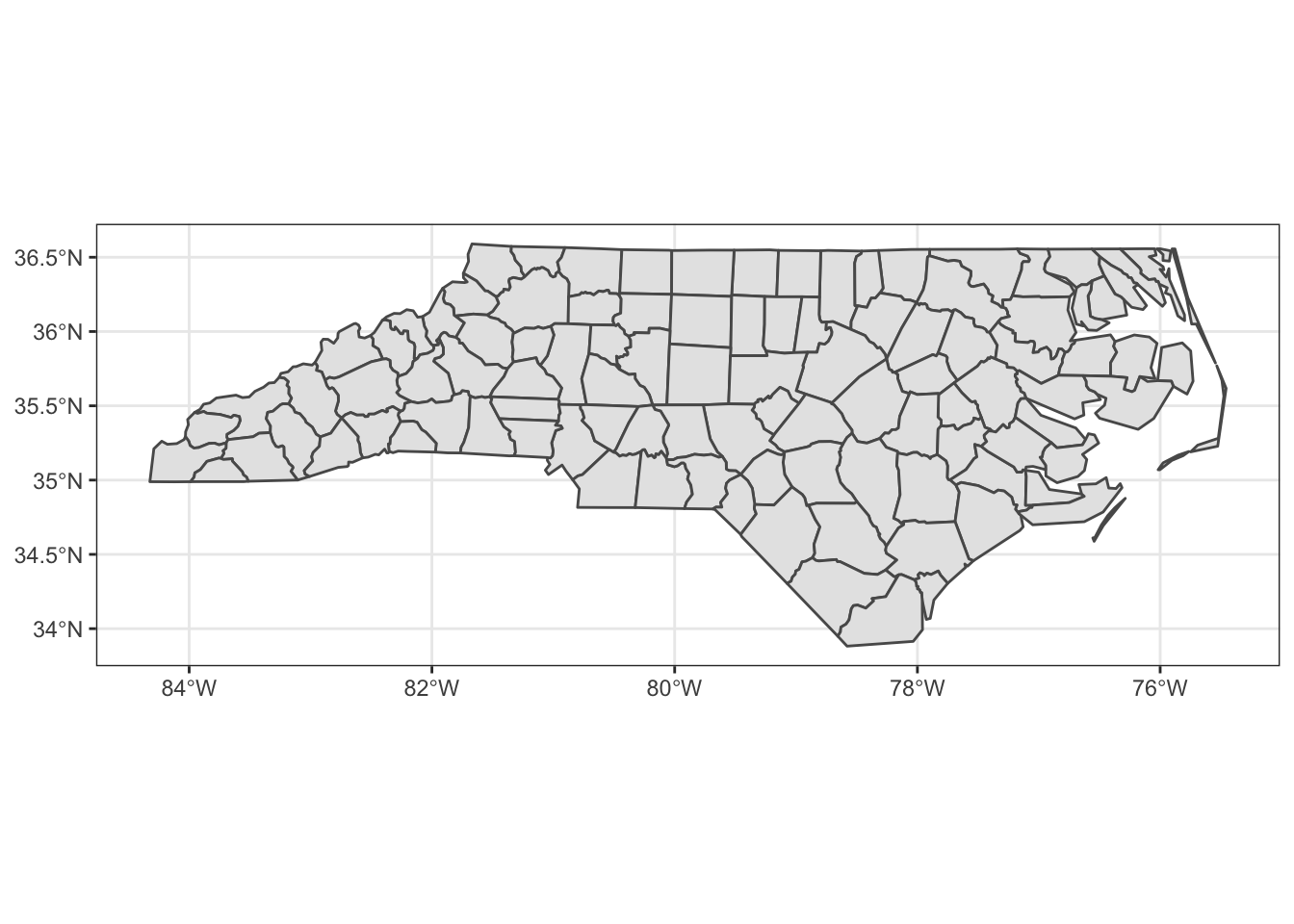8.6 Saving a ggplot object as an image
Maps created with ggplot2 can be saved using ggsave() with the following syntax:
ggsave(filename = file name, plot = ggplot object)
#--- or just this ---#
ggsave(file name, ggplot object)Many different file formats are supported including pdf, svg, eps, png, jpg, tif, etc. One thing you want to keep in mind is the type of graphics:
- vector graphics (pdf, svg, eps)
- raster graphics (jpg, png, tif)
While vector graphics are scalable, raster graphics are not. If you enlarge raster graphics, the cells making up the figure become visible, making the figure unappealing. So, unless it is required to save figures as raster graphics, it is encouraged to save figures as vector graphics.96
Let’s try to save the following ggplot object.
#--- get North Carolina county borders ---#
nc <- st_read(system.file("shape/nc.shp", package="sf")) Reading layer `nc' from data source `/Library/Frameworks/R.framework/Versions/4.0/Resources/library/sf/shape/nc.shp' using driver `ESRI Shapefile'
Simple feature collection with 100 features and 14 fields
geometry type: MULTIPOLYGON
dimension: XY
bbox: xmin: -84.32385 ymin: 33.88199 xmax: -75.45698 ymax: 36.58965
CRS: 4267
ggsave() automatically detects the file format from the file name. For example, the following code saves g_nc as nc.pdf. ggsave() knows the ggplot object was intended to be saved as a pdf file from the extension of the specified file name.
Similarly,
#--- save as an eps file ---#
ggsave("nc.eps", g_nc)
#--- save as an eps file ---#
ggsave("nc.svg", g_nc)You can change the output size with height and width options. For example, the following code creates a pdf file of height = 5 inches and width = 7 inches.
You change the unit with the units option. By default, in (inches) is used.
You can control the resolution of the output image by specifying DPI (dots per inch) using the dpi option. The default DPI value is 300, but you can specify any value suitable for the output image, including “retina” (320) or “screen” (72). 600 or higher is recommended when a high resolution output is required.
One potential advantage of the eps format is that you can adjust parts of the output figure or change the font of characters using a vector graphics editor application such as the Adobe Illustrator. I personally prefer to do everything in R, but you may find this feature appealing and often much quicker.↩︎